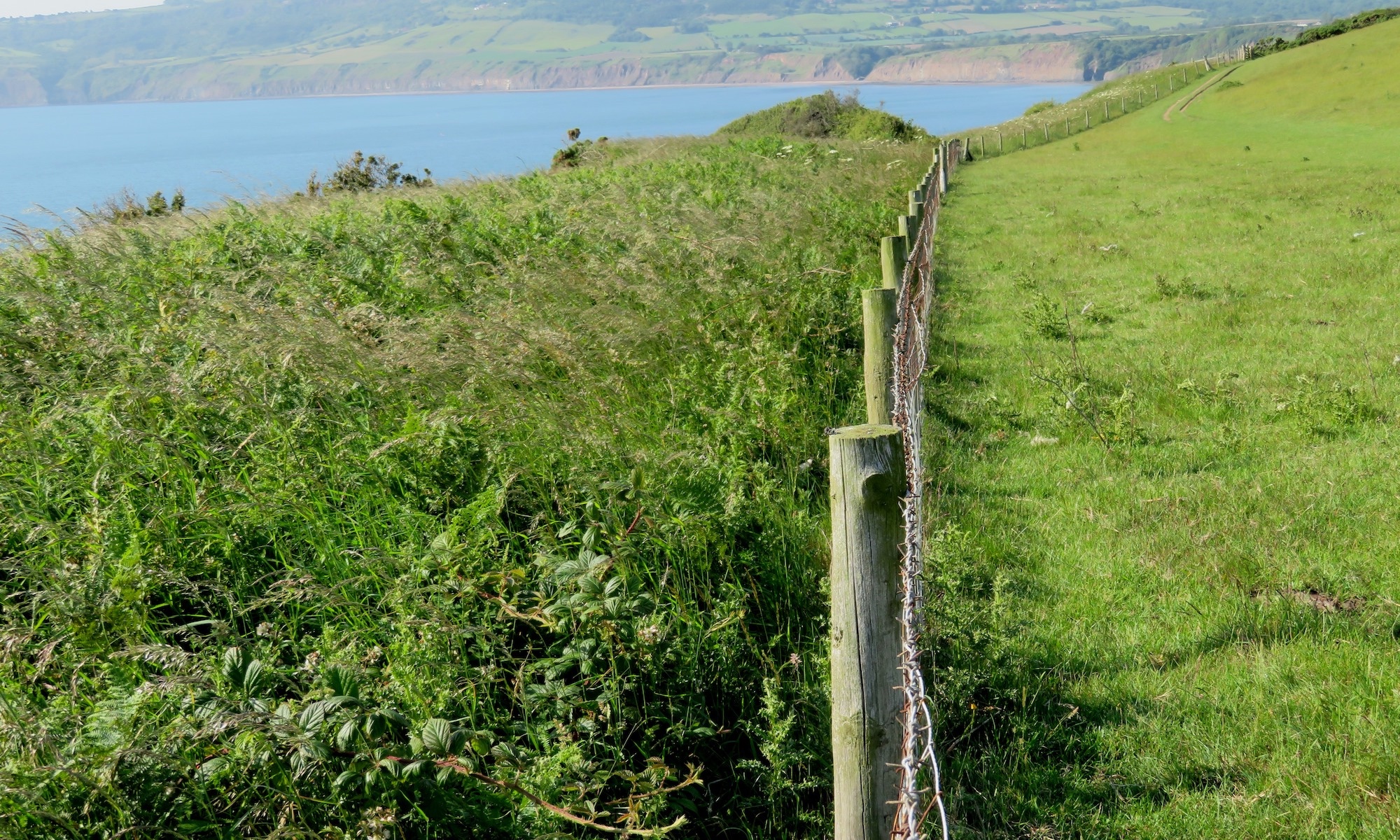by Sam Herbert.
5th January 2024
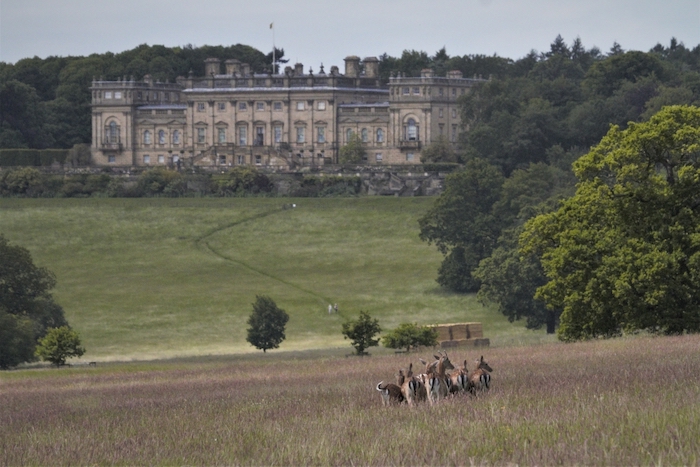
Tucked between Leeds and Harrogate, the glorious 4000-acre Harewood Estate is made up of ancient and semi-natural woodland, wood pasture parkland, arable farmland, ponds, lakes, wetland and flood plain serving the River Wharfe. The Estate is most famous for its historic house, now managed by the Harewood House Charitable Trust, but beyond the manicured lawns and sweeping views, managing director Ben Lascelles and his team are cultivating a wild wonderland. An ecologist by trade, Ben recognises how much our environment is changing, and the important role of estates like these in protecting our future wildlife. His new management direction focuses on a wild and resilient future whilst still preserving the deep cultural heritage of the site. It’s a fine balancing act, and I met with Ben to learn more about how he’s evolving the land, the challenges he’s met and what he has learnt along the way.
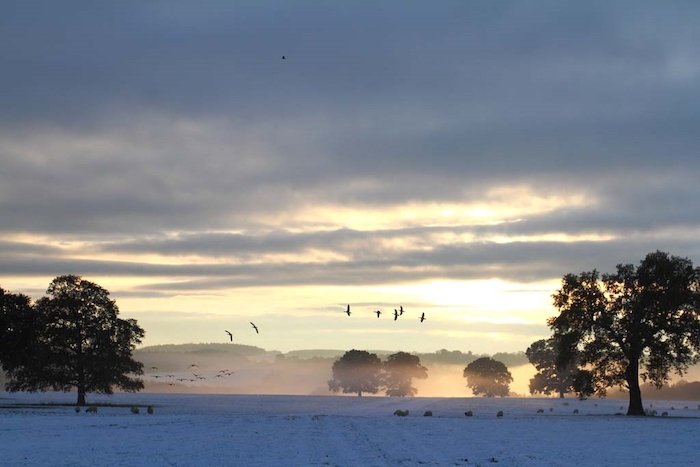
Trees glorious trees
As soon as we set off from the Muddy Boots café (where I can highly recommend the salted caramel brownie) it’s clear trees are key here. Covering about 20% of the Estate and with around 160 acres designated Ancient and Semi-Natural Woodland (ASNW) and Planted Ancient Woodland Site (PAWS) Ben confirms woodland is probably the most important aspect of the site for biodiversity at the moment. Surveys undertaken in 2020 in one woodland block identified 17 different tree species. And, of course, where you find a mass of broadleaf diversity, you also find the ideal conditions for colourful spring flowers to thrive. Visit the Harewood Estate at the right time of year and you will find some of the finest bluebell woods in the region. There are around 16 miles of public footpaths running through the Estate, including parts of the Ebor Way and Leeds Country Way, making this a perfect place for a wild walk. So far over 200 ancient and veteran trees have been located on site, some of which date back to medieval times, ready to share their wisdom and protection with the newbies just pushing their first shoots out of the soil. Creating more breadth in the age of trees across the Estate is a key focus for Ben as more areas of woodland are planted and restored, so having these established giants is a real asset – not to mention utterly beautiful to behold as we drive past their winding winter limbs.
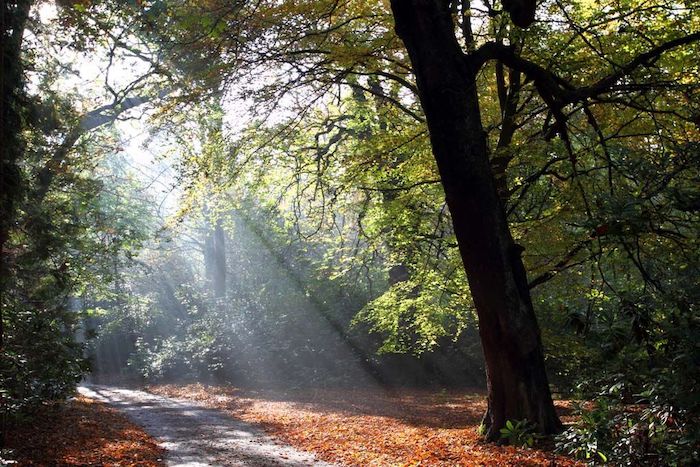
The on-going management of the more densely planted areas is helping to thin out the conifers, which creates more room and light for other species to establish and start getting those all-important layers back into the lower throngs. Ben’s future projects involve scrub planting to help to soften the blunt edges of the woodland areas, providing a rich habitat buffer without compromising the views to and from the house – a key aspect of compliance with the heritage protections on the site. Having also just sown over 100 hectares of wildflower seed to recreate areas of traditional hay meadows, Ben is excited to see how the landscape evolves over the next couple of years: “We’re making good progress in clearing invasive ponticum rhododendron, Himalayan balsam, bracken and to a lesser extent Japanese Knotweed, and we hope ancient woodland indicator species will now return to these areas.”
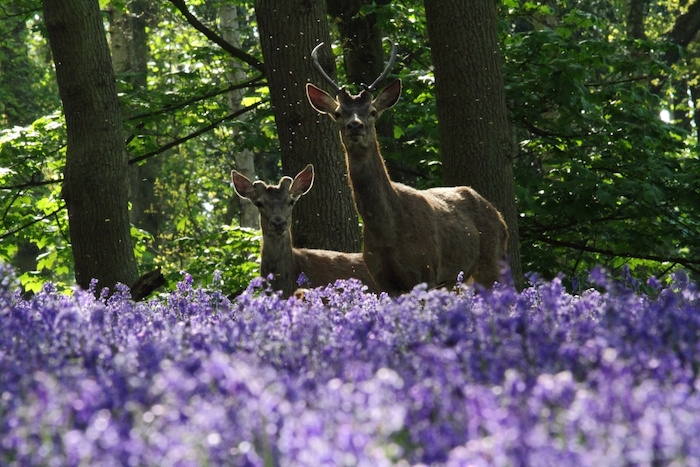
I can see the stark difference between the open woodland on one side of the track cleared of rhododendron, and the other side where it still dominates, creating a dense almost impenetrable layer between the trees. It’s a tough job battling these introduced species, but well worth the effort. Ben’s top tip is creating a bit of competition around the clearance and getting an element of fun into the task. Many hands make light work and having a team of ex-army volunteers in with a sprinkling of competitive spirit made short work of a challenging job!
In-house talents
Volunteers, contractors and the hard-working Estate team all play a big role in the transformation to a wilder Harewood. Many of the on-site team possess and develop traditional skills that allow for the heritage elements of the site to be restored in a way that protects and complements the rewilding surrounds. One of Ben’s key aims is to get rid of the need for fencing across much of the site, to create a more connected habitat, but as Highland and Pedigree Aberdeen Angus cattle graze among the trees there is a need to prevent them wandering into the local village and enjoying a snack on someone’s garden vegetable patch! We pass several areas where ‘hahas’, a type of traditional boundary, are being repaired. These ditches with a steep, stone wall at one side create a sunken barrier to contain livestock without creating a visible change in the landscape. One theory is that their unusual name comes from them being hidden from view causing many a hapless wanderer to fall into one. Fortunately I avoided that fate.
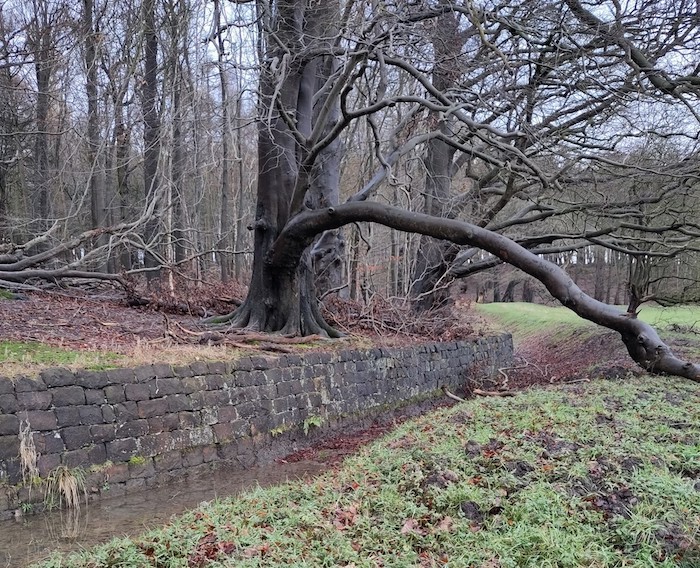
Ben’s own background as an ecologist and lifelong birder put him in good stead to know where he wants to get to in the long term. He recognises there are challenges in keeping the momentum and enthusiasm going across generations for projects that will only truly be realised beyond our own lifetimes. Shorter-term aims are key to inspiring progress towards the bigger picture and the areas that have recently been reseeded with wildflowers, in particular our old friend yellow rattle to help thin out the dominant grasses, are the current focus. There is big hope for attracting more ground-nesting birds as they become more established meadows. Future ambitions to see more corncrakes, quail, cranes and maybe even a few lowland hen harriers are all high on the list.
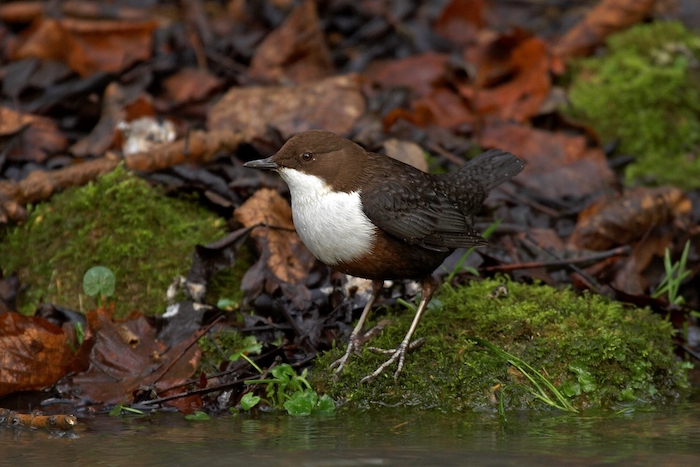
Harewood’s educational programmes are also helping to nurture talent in new generations who can continue this kind of work long into the future. Much of the progress around restoring and protecting wildlife comes from inspiring people and helping more of us to emotionally reconnect with nature. There is already an established Forest School and bushcraft area within one of the woodlands which provides ‘hands on’ education and a genuine connection to nature for youngsters. Projects bringing local community groups onto the site provide mutual benefits with teambuilding and learning for the visiting groups and more help for restoring precious habitats. A new outdoor education manager has been hired to enable the development of a programme of school events to get pupils on site and learning about ecology.
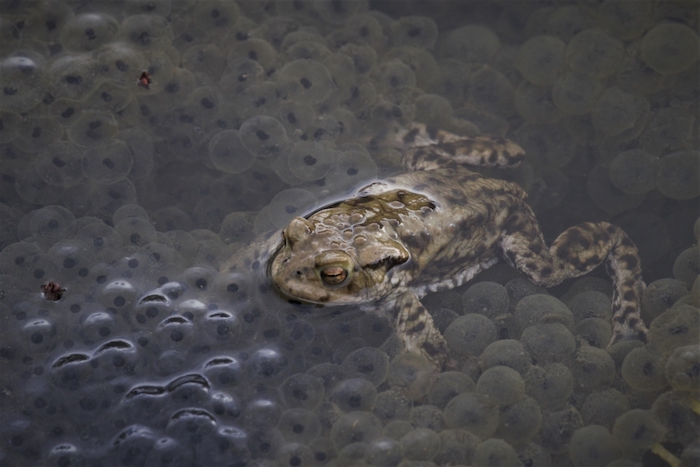
Getting down to business
Of course, there’s always the question of how to keep the money flowing so that all these projects can continue. As well as making the most of grants and subsidies – and bearing the frustrations of navigating the paperwork – Ben talks about the diverse range of businesses developing across the Estate. The more traditional aspects such as arable and livestock farming, forestry and on-site residential properties are now complemented with commercial units, holiday cottages, hospitality events and a wider range of food production. The honey, for example, is produced by a local beekeeper who borrows a portion of land on the Estate for his hives. As well as the benefits of more pollinators on the site, funds from this enterprise are invested into the restoration of wildflower meadowlands – now one of the UK’s most threatened habitats.
Businesses taking up one of the commercial units can boast of their green credentials, as the power running these properties comes from on-site bioenergy, generated from the timber the woodland thinnings provide. There are plans to increase on-site renewable energy generation through solar panels, with the ambition that the Estate will ultimately be self-sufficient, and the electric vehicle infrastructure is already in place encouraging residents and visitors to make the switch away from fossil fuel powered vehicles. Even the farming practices are evolving, with more precision and regenerative farming techniques being explored and adopted.
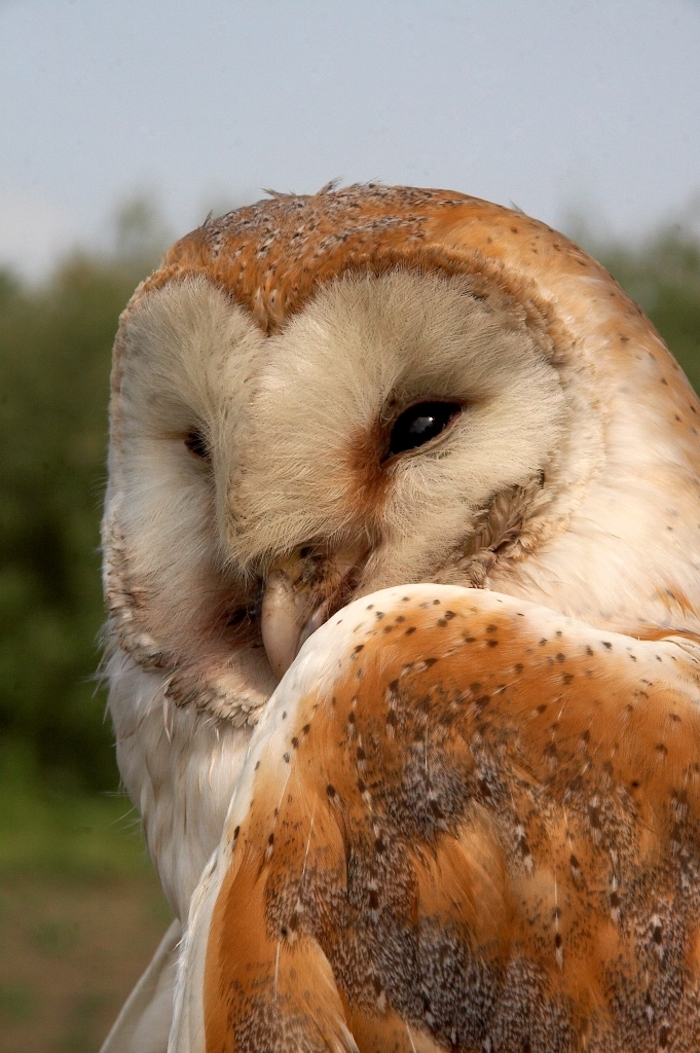
There are plans in the making to get people enjoying the event facilities to pay more attention to nature’s recovery. If you choose to get married on the Estate, there’s an opportunity to plant a wedding tree as part of the woodland restoration programmes on site – not just a lovely idea for a romantic touch to the day, but also a way to encourage an emotional connection with nature and a reason to revisit over the years to come.
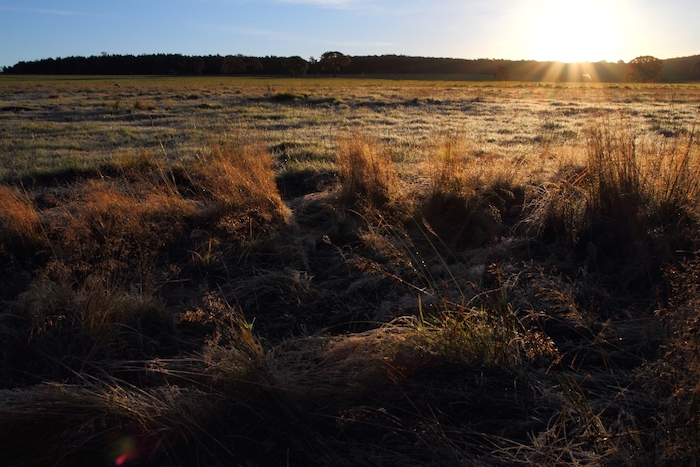
Hold your nerve
As a heritage site with over 100 listed buildings and monuments, there are many considerations and complexities in planning changes to the landscape. These cultural protections need to be carefully negotiated whilst planning wilder areas that can be allowed to naturally regenerate. Ben describes having to detail the exact spot where trees will be planted to ensure they don’t obstruct views to monuments. Because of this, there is a limit to how much the site can be allowed to rewild, versus creating a more managed restoration of habitats. However, despite the frustrations that restrictions like this can cause, Ben remains positive about the progress of his projects and takes it in his stride. “Jumping through the hoops is all part of the process and of course there will be frustrations along the way, but you just keep going.” His advice is about knowing your intentions, being clear about why you’re doing it and respectfully putting your case forward (with a little flexibility to allow for the more dated regulations). That perseverance will get you there in the end. It’s clear from the way Ben talks about the Estate that he has a multitude of projects in mind at any one time – from the very established through to a nugget of an idea yet to be realised. It’s this variety that allows progress to keep happening in the face of barriers and delays.
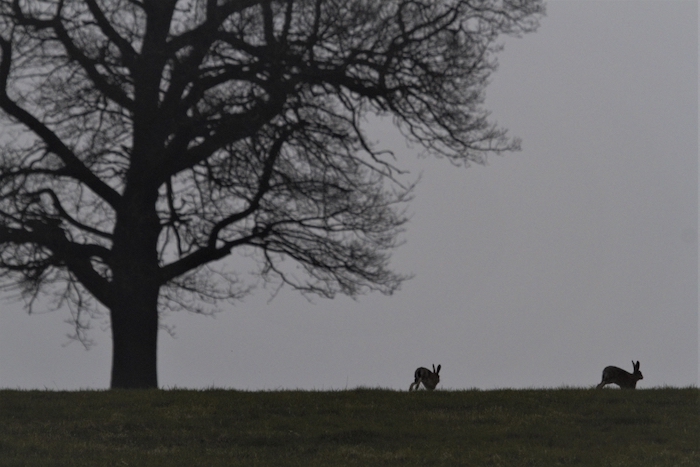
My time with Ben has made me fall in love with this little pocket of Yorkshire land. Through each gate another project is revealed – shrub planting, new trees, thinning of conifer plantations, newly sown meadows, wooded wetlands slowing the flow of water through the Estate… each in a different state of progress, each promising a welcoming home for future wildlife – and I feel a sense of hope for the future. Early as it may be for many of these projects, the site is already a vision of transformation and an incredible example of how our long-managed estates are even more beautiful when allowed to stretch their natural limbs. As we arrive back at the Muddy Boots café car park, red kites are circling overhead and I remember how it wasn’t all that long ago these glorious birds were absent from our skies. “I’ve seen groups of 100, 120 circling like that before,” says Ben, and on hearing those words I quietly hope to myself that their story is a sign of things to come for our other native species. With efforts like those now happening at Harewood, I can certainly feel that hope getting stronger.
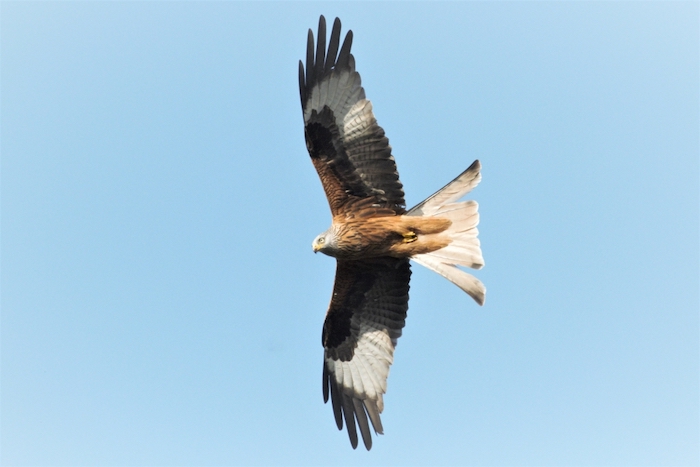
You can find out more about Harewood Estate and see what’s on – including opportunities to visit and volunteer – at Harewood Estate and Harewood House. There’s a lot of scrub to go in, so keep your eyes on the Make a Day of it webpage where you’ll find details of upcoming volunteering opportunities and the sign up form.
There will be various opportunities throughout the year for specialist tours of the site, details will be on the websites when dates are released. The Estate is accessible by public transport by taking bus number 36 from Leeds city centre to the Harewood Arms stop, which is a just few minutes’ walk from Muddy Boots café.
